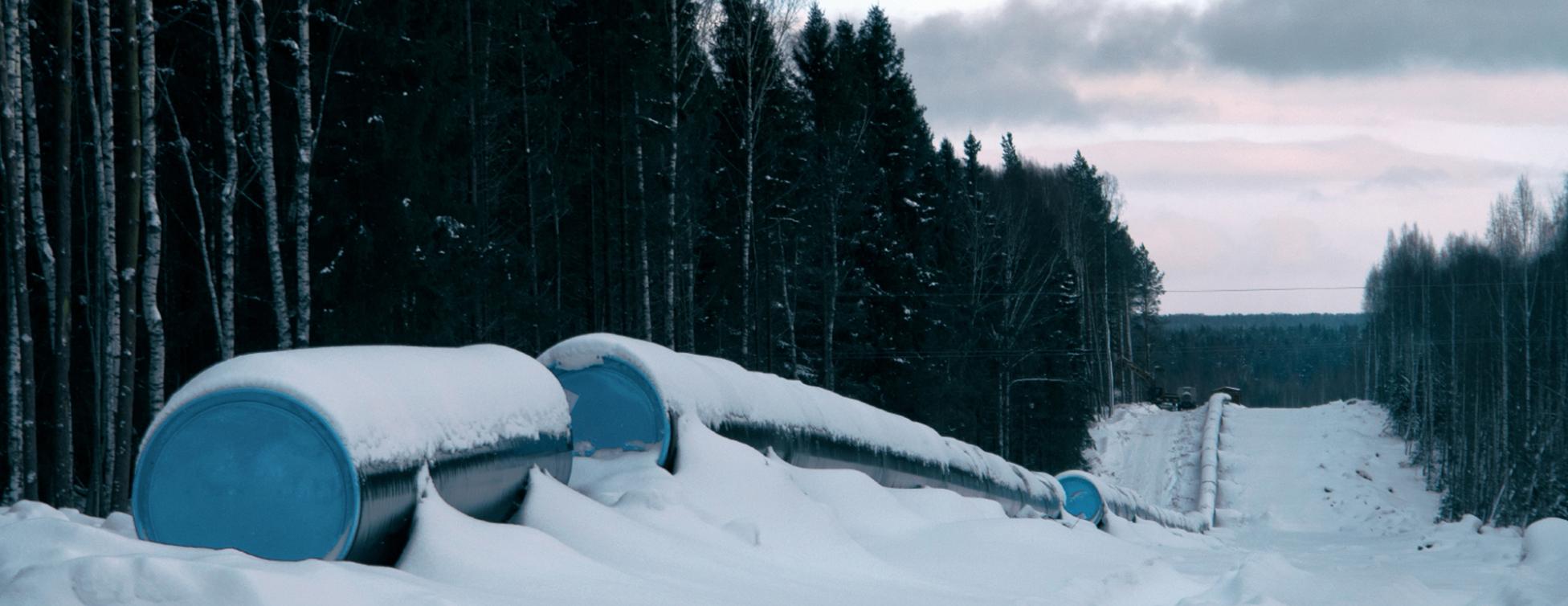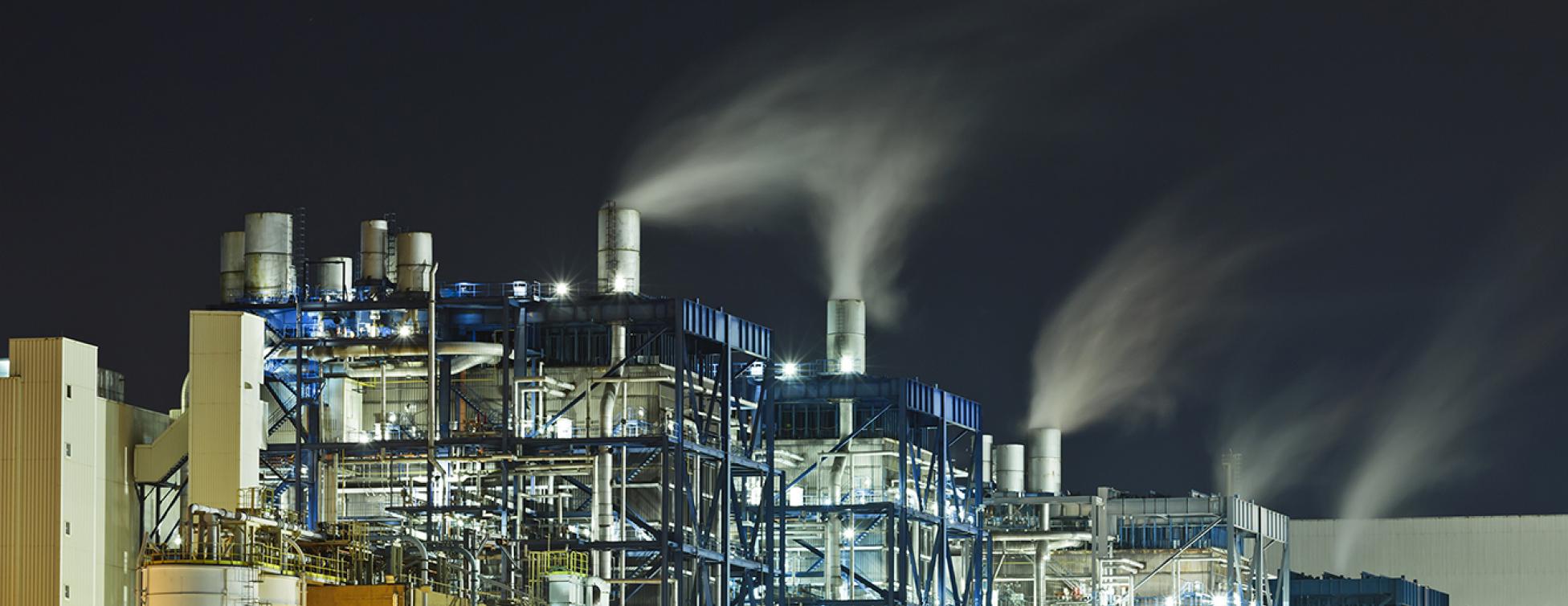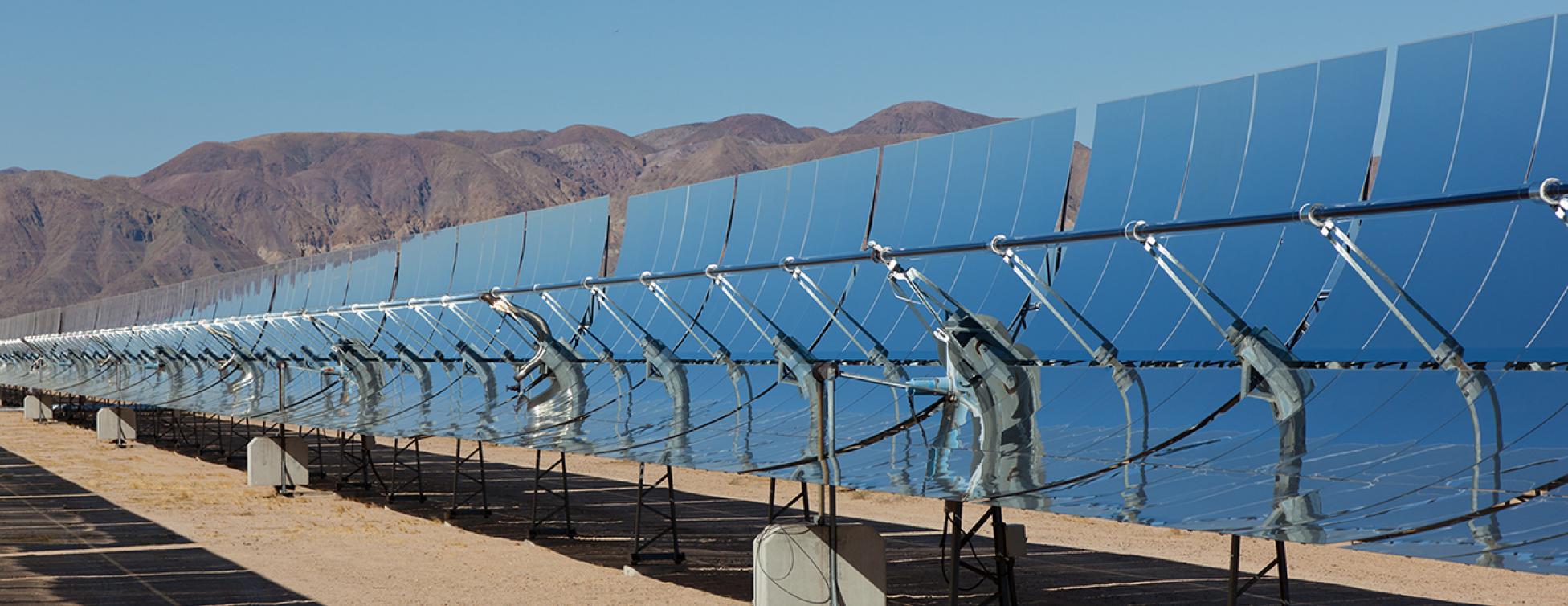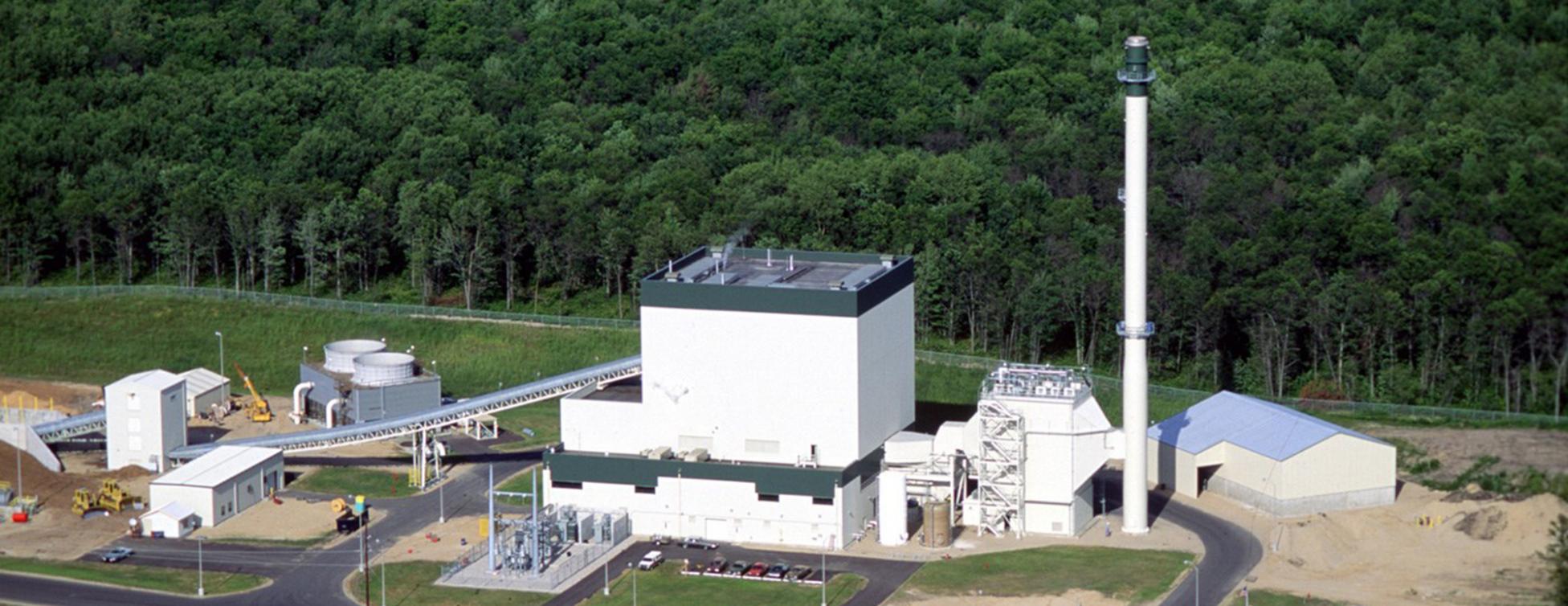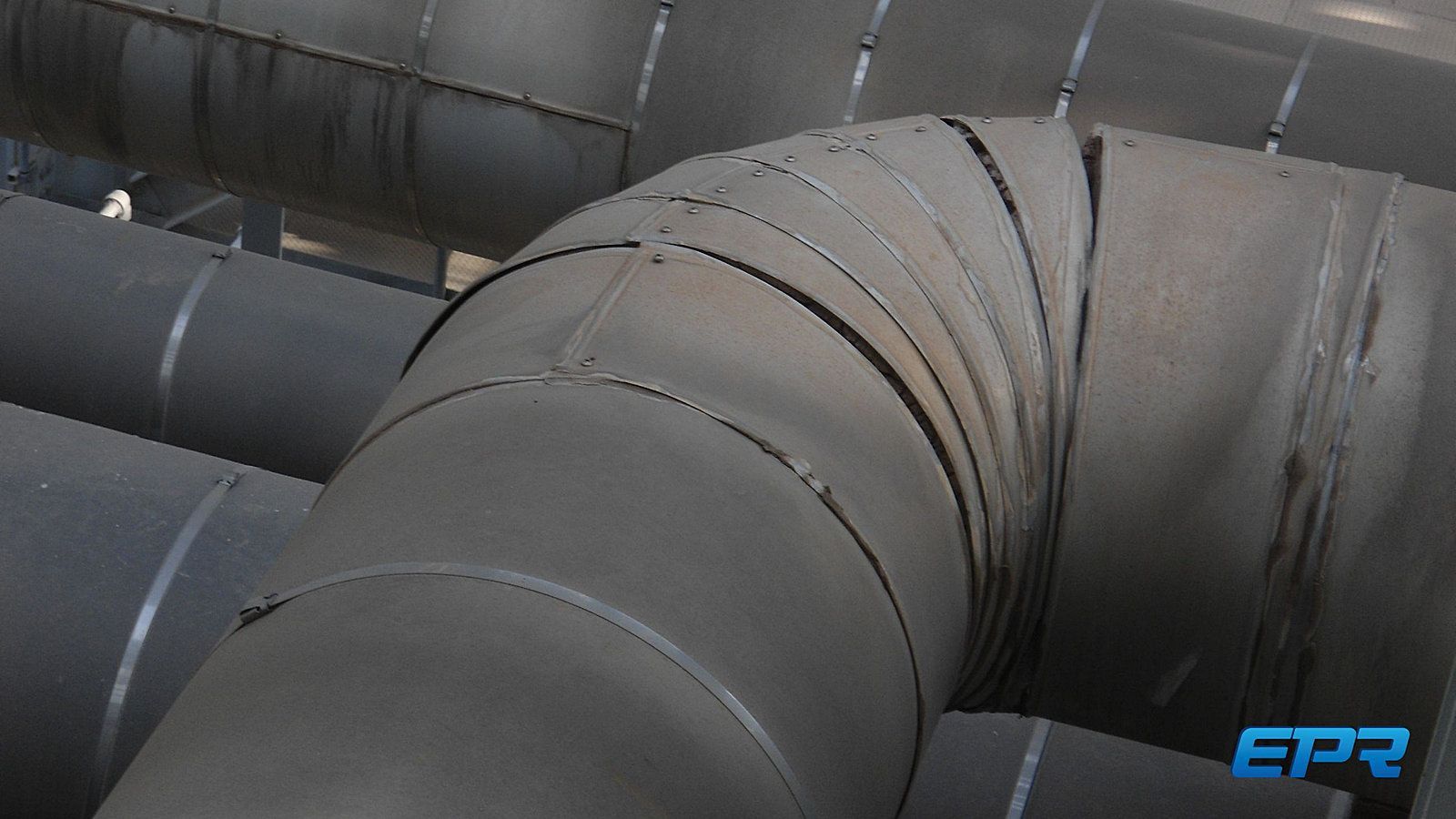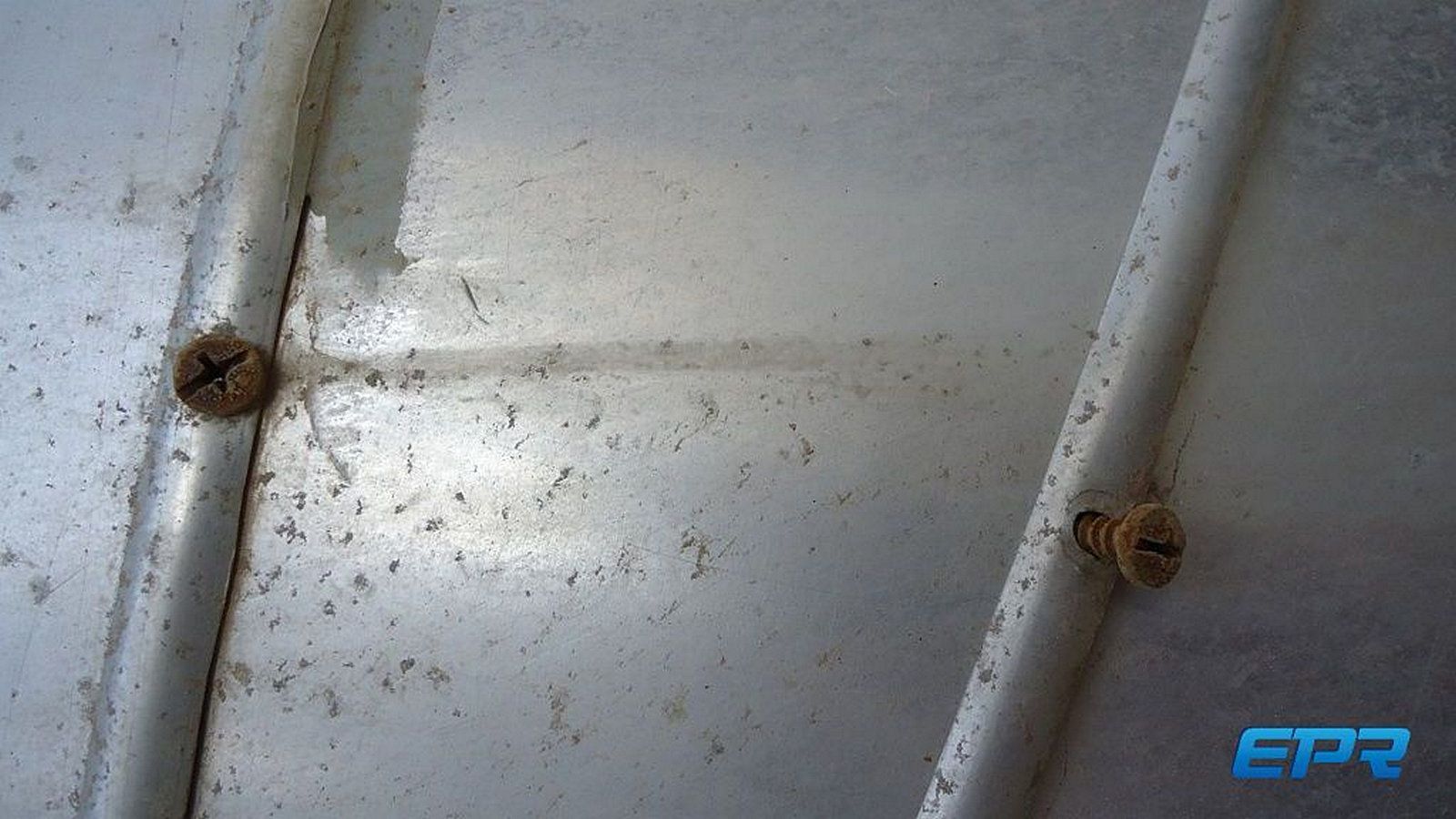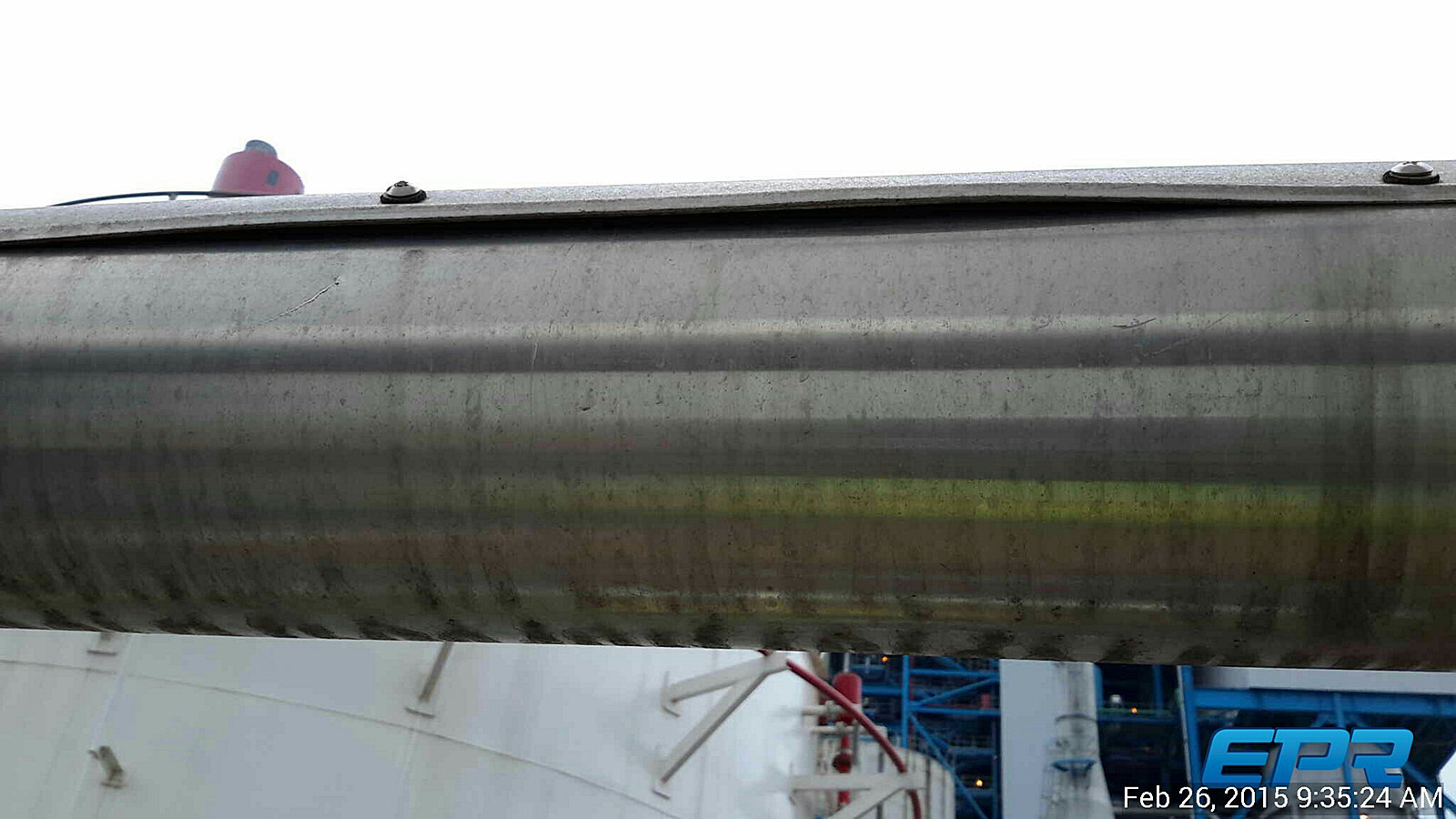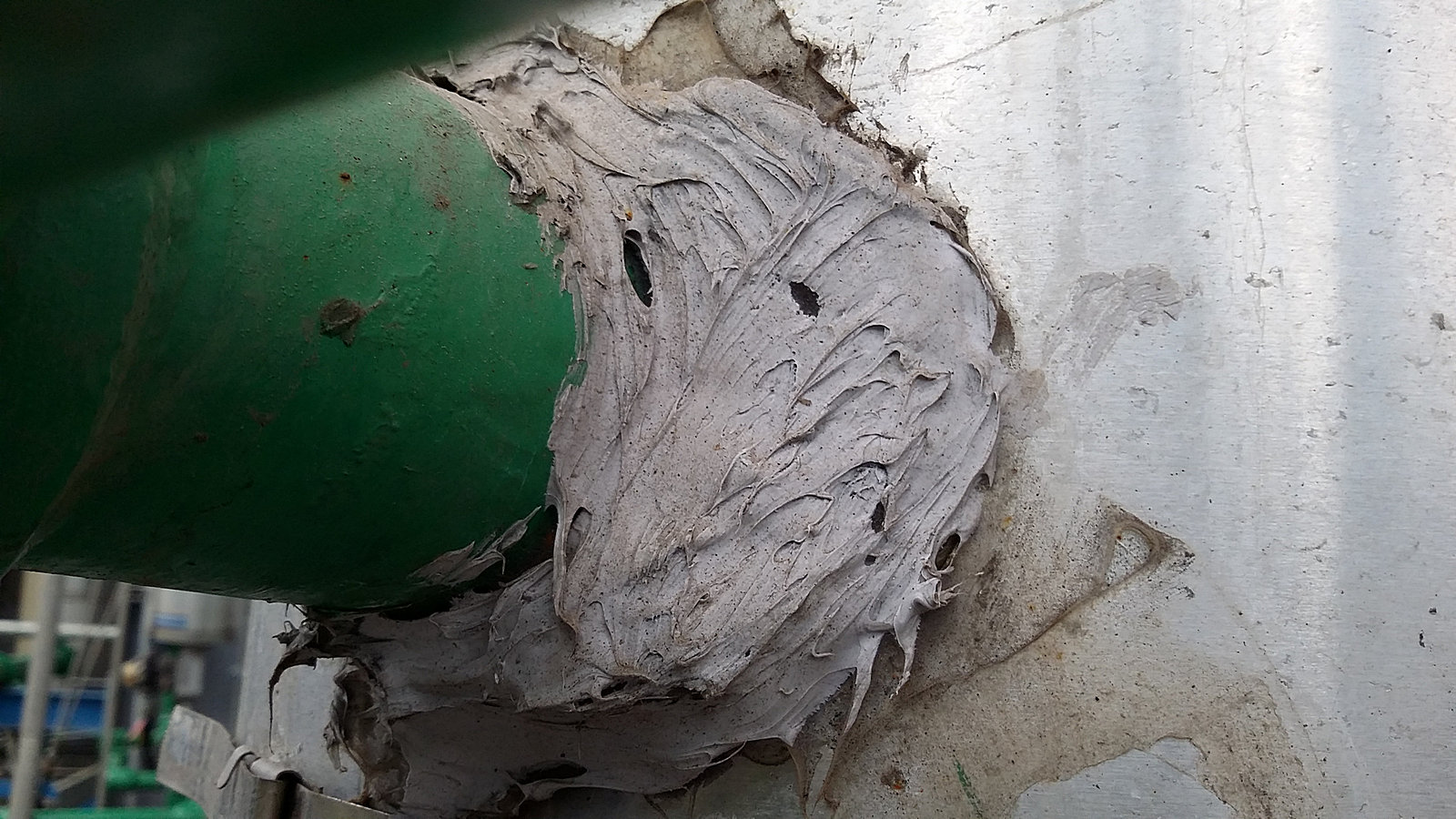Pipe Insulation
Piping insulation installation activity unfortunately occurs when crews are under a great deal of pressure to finish. Piping is almost always at or near critical path for any industrial power project. It gets rushed.
While that explanation is a hat tip to reality, it is not an excuse for the extraordinary poor quality exhibited in many new facilities. In these photos, the plants are not more than one year into COD and look 15 years old. Over time, these plants will get worse.
For owners, quick deterioration of piping insulation can cause several problems. Heat loss, safety, and general sense by O&M staff that the plant is not worth maintaining because it certainly doesn’t look like anyone ever cared. Many overlook this point, but O&M culture affects a plant, and a plant delivered in poor condition can also work against new management trying to instill a culture of personal ownership with new crews.
So, what about heat loss. Consider technically, a few inches of open insulation on steam piping allows as much heat loss as maybe a hundred feet of properly insulated pipe (depends on temperature and insulation class). Leaking lagging (jacket) also have a similar effect when insulation becomes saturated with water and acts like a conductor rather than an insulator. What looks like a small defect is usually thermally significant.
These plants had lagging made of aluminum and the self-tapping screws were carbon steel with cadmium plating. Please note all are in an advance state of substrate corrosion and will fail in a few years. What holds the lagging (cover) onto the pipe then?
Additional defects include missing expansion joints, missing support rings and 4” overlap on vertical piping runs (sagging insulation), missing clips on vertical runs, major elbow sealing problems and separation, sharp edges from banding and other shoddy workmanship, valve boxes that have fallen apart, large areas of uninsulated components, and excessive RTV to try to bridge over bad workmanship.
The variety of defects and unusual/creative installation problems is almost limitless. Please also consider the scale of these projects. To provide context, these are huge facilities each costing over $2.5B, and this is not an easy issue to resolve without spending many millions.
This is another example of a problem that is best avoided, because it will likely never get fixed and O&M will not spend money and resources to resolve this systematic problem either.
None, or perhaps a small savings.
High, though unknowable. Suggest it’s many millions of USD. The cost of thermal drag might be as high over time.



